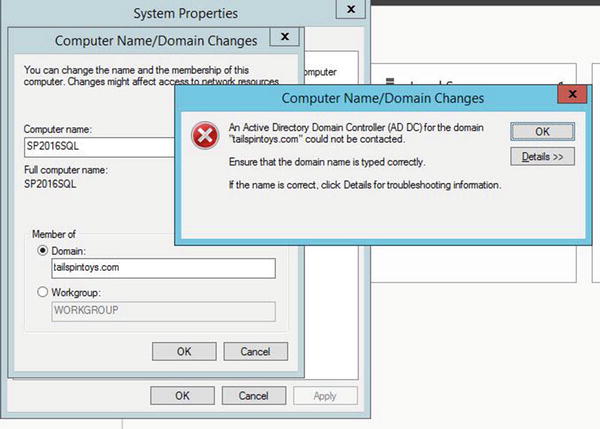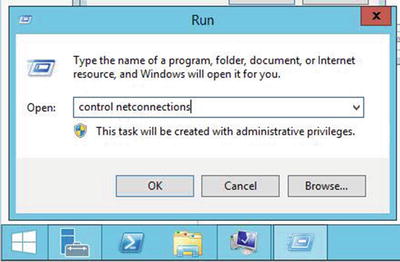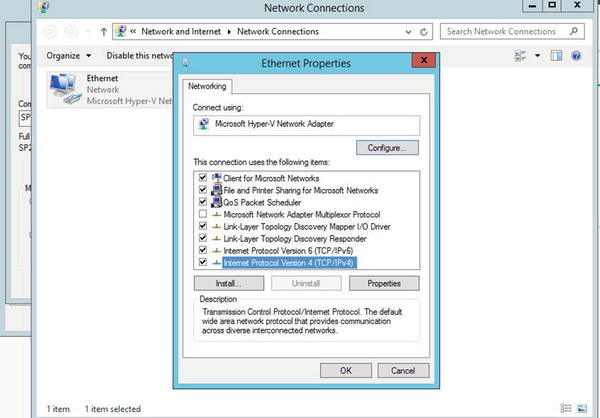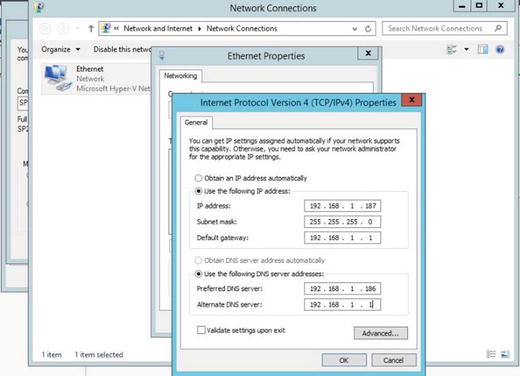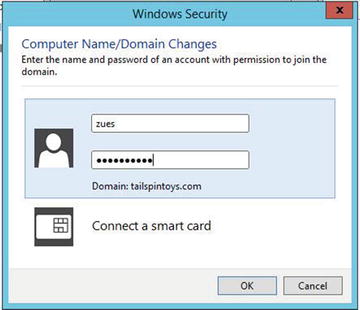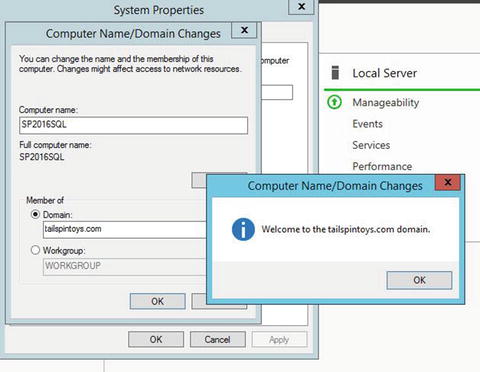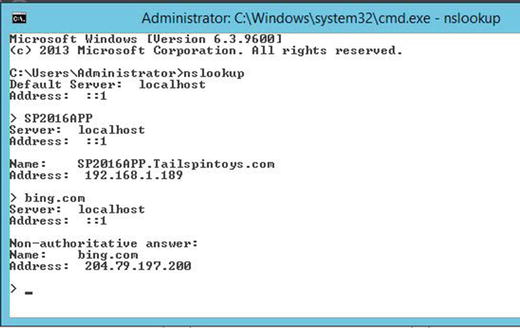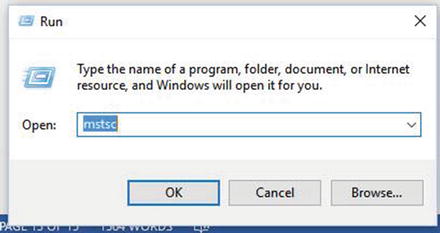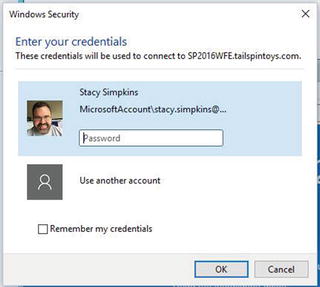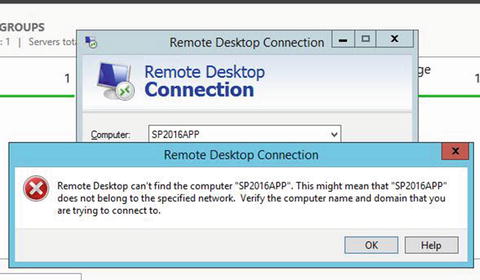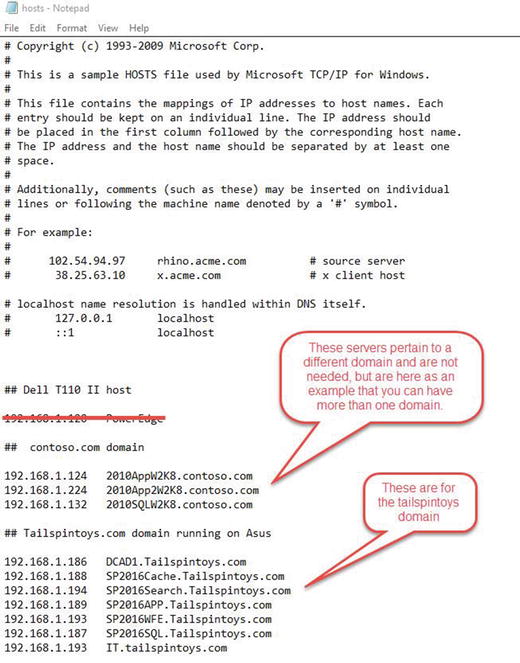The Time You’ve Been Waiting For
It’s time to join the machines to the domain. At this point, you’ve created a domain controller and partially configured a domain. I say “partially” in order to stress that I’m not covering every single aspect of configuring a domain. I’m only going over what is needed to get SharePoint 2016 running.
Now that you’ve joined all the member servers to the domain, let’s perform a domain resolution exercise to understand how to verify IP resolution. After the resolution exercise, let’s look at using the Microsoft terminal services executable to log in to the servers.
The DNS namespace lookup tool lets you check records in DNS without opening DNS.
Now that you know how to look up records in DNS, we will try another way to log in to the member servers—directly from the host (from the laptop, PC, or server on which you installed Hyper-V). This is the method that you’d use in a live-fire situation, too. It also looks great in presentations. The Hyper-V Manager method of logging into the machines that we’ve been using up until this point is not as nice as using Microsoft Terminal Services connections (mstsc.exe).
In a home lab setting, the only prerequisites for mstsc.exe to work when entering the host names is a modified hosts file and remote access enabled on the VMs. In a domain-joined PC (not in a home lab setting), you could use mstsc with host names without modifying the hosts file on the local PC, as long as the server or machine is enabled for remote access.
In Chapter 1, you dorked (modified) the hosts file of your laptop, and in Chapter 3, you set remote access to Enabled. We’ll double-check this in following exercise.
Do You Want to Know More?
Table 6-1 provides additional information.
Table 6-1. Not Required Reading, But Here If You Want To Dive Deeper
Topic | URL |
|---|---|
Nslookup | |
Troubleshooting Domain Join Error Messages | |
Join and Authentication Issues | |
Network Geeks by Brian E. Carpenter (Apress, 2013) |
Summary
This chapter covered joining SharePoint (and maybe SQL) servers to the domain. We used nslookup to check the domain name resolution. We made sure that the domain controller had that all-important service location record for the ldap service. We double-checked our machines for network discoverability and remote access settings. Then we checked out Microsoft Terminal Services connection.
In the next chapter, we’ll dive into group policy, learn about some of the default group policy objects (GPOs), check out the computer or server’s local security policy, and create a GPO that controls who is an administrator on our member servers. Then, after the GPOs are good to go, we will create a certificate authority and a wildcard certificate.



